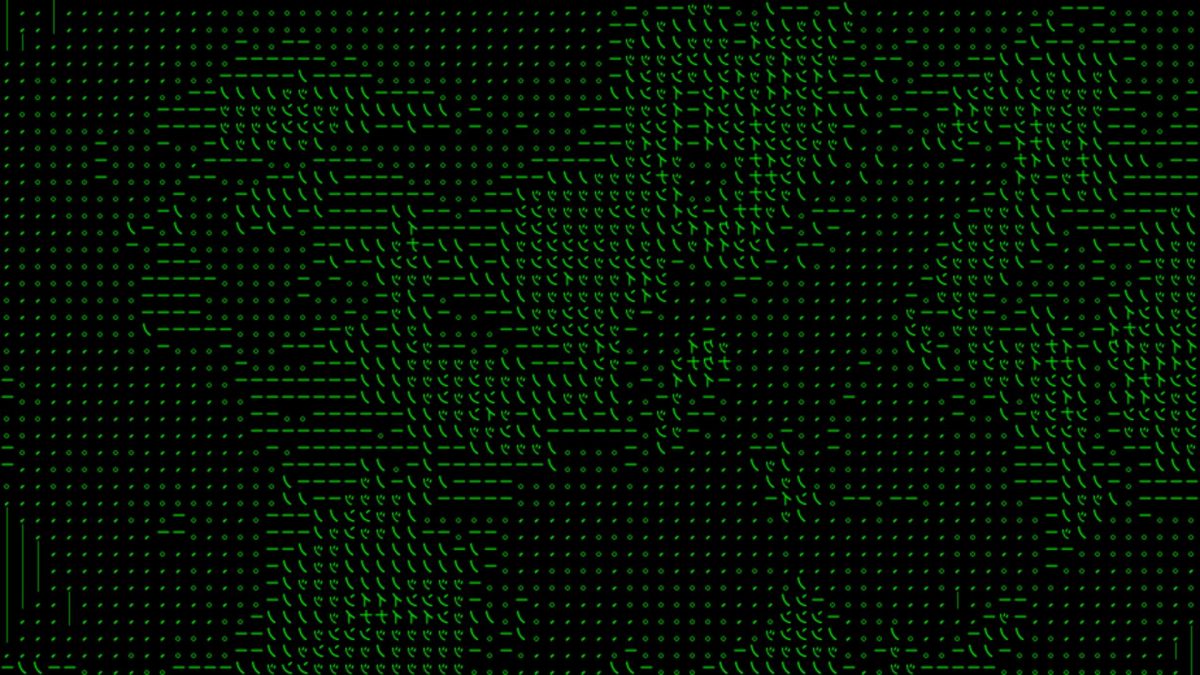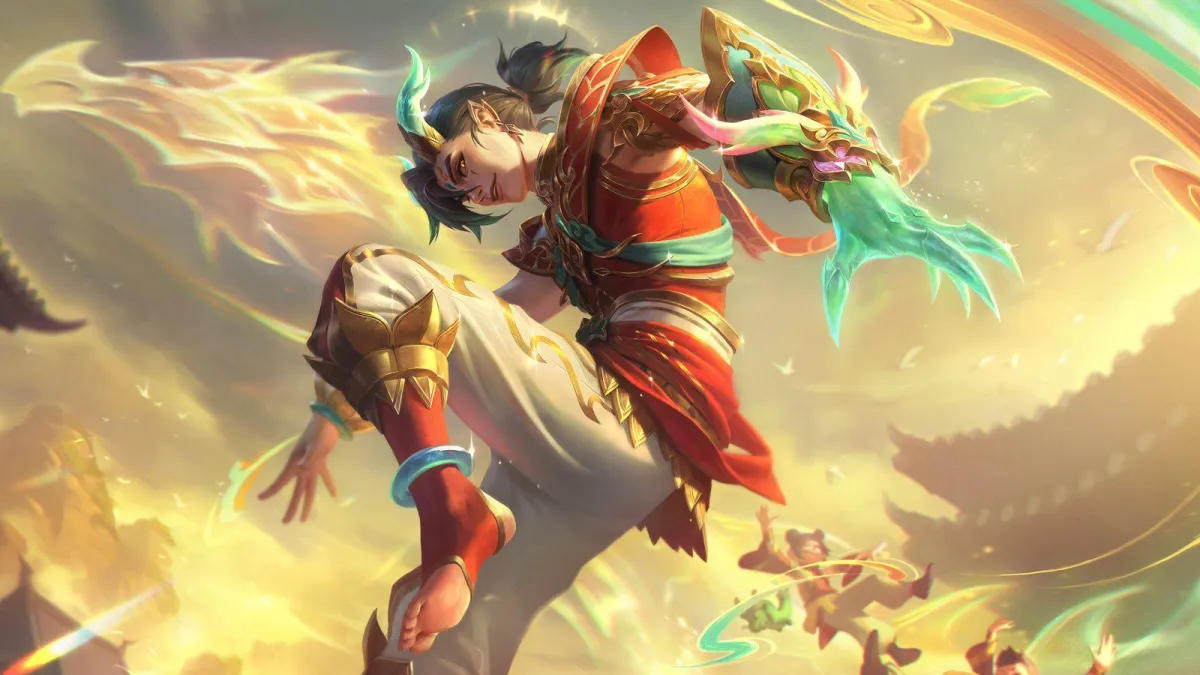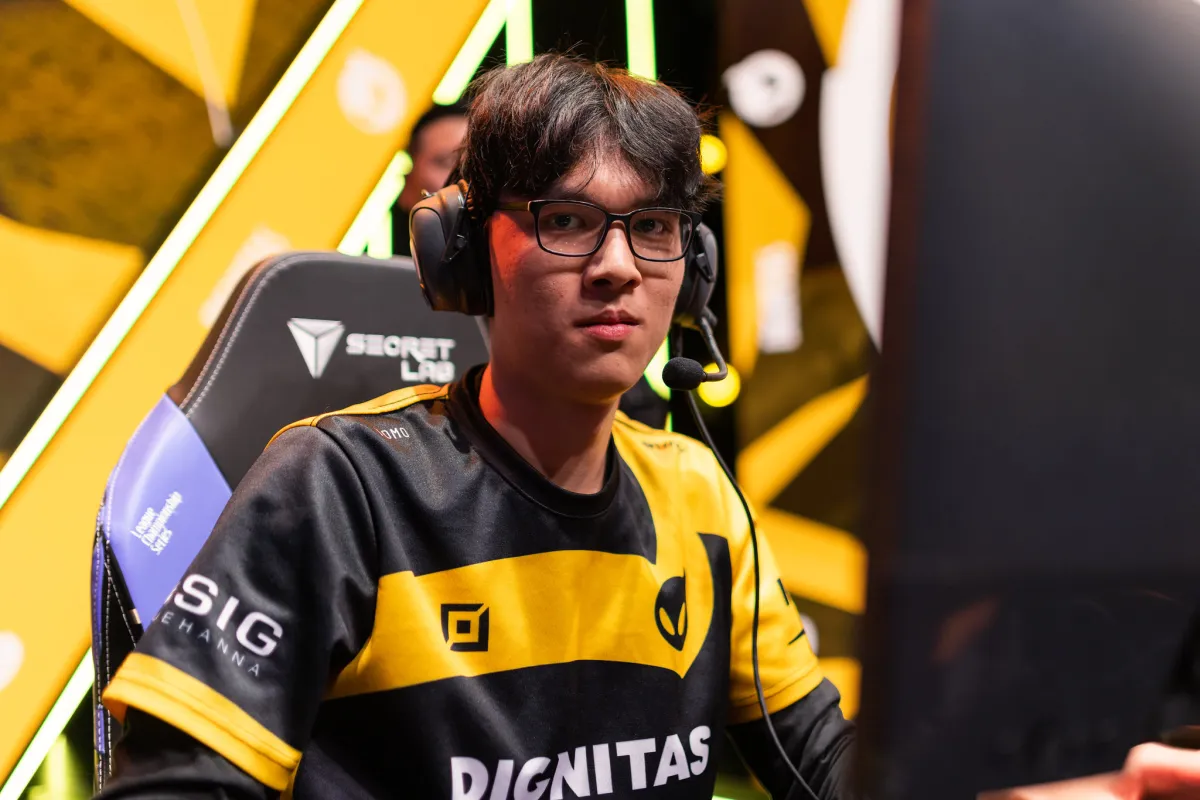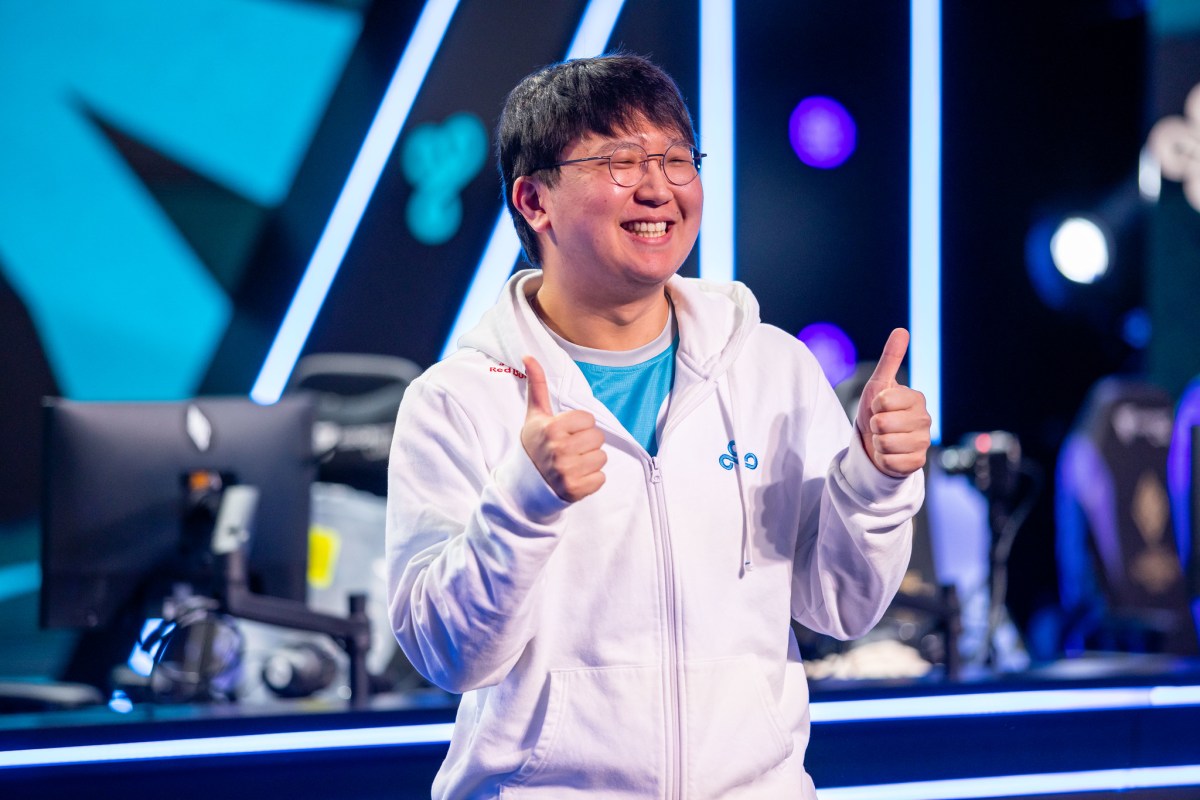On a typical League of Legends Championship Series game day, fans will watch the players load into a match while casters hype up the game and graphic overlays settle onto the screen. They display the game time, towers taken and each team’s total gold.
Behind the usual teamfights, champion picks and openings a team may throw out – a Red Buff start here or a Blue Buff invade to Level 2 gank there – there is a microcosm of data that analysts of the game can pull from to make conclusions about players and teams.
Gavin Johnson, a statistics operator in the LCS broadcast, is one of the people behind bringing those stats to a casual audience. He might throw up a well-timed graphic for the casters that explains a certain player’s or champion’s statistics, crafting a narrative for the viewer to follow. He is also responsible for pulling up the data for the stats that the analyst desk displays while they break down either side’s performance.

“Stats are a way to hone in on that and find out why what they’re doing worked,” Johnson said, “and then kind of explain that to someone who might not see the whole picture, whether because they’re not super good at the game or they’re just casually watching. So it’s just kind of like a tool to enhance the story of the analyst itself.”
Most of the time, these graphics showcase more advanced statistics like forward percentage (how often a player has pushed their enemy laner in) or jungle proximity (how often a jungler is hovering around another ally player). The cards usually have a player’s KDA (kills/deaths/assists) numbers to give general viewers something they can relate to as well.
That statistic right there is a contentious one among data scientists, team analysts and players alike.
“The way stats are used sometimes on broadcast, to me, is abhorrent,” analyst Mike “Beora” Skriloff said while working for Counter Logic Gaming during the LCS 2021 summer split.
“I still believe that a lot of the stats, especially the ones used on broadcast are just trash,” freelance caster Kari “Space Ghost” Keone added. “They’re just for confirmation bias.”
“I think they’re [stats] a little bit overused,” former Immortals mid laner David “Insanity” Challe said in a post-game press conference during the 2021 season. “Some stats on LCS broadcasts are a little random and don’t really have much merit whatsoever.”
It’s a tough balance. Stats heads, pro players and high-level viewers want the broadcast to tell the real story, but there’s also the pressure to produce a show the broader audience can understand and engage with. Johnson’s job is to try to bridge that gap – and try to shrug off the criticism when it comes.
Players and analysts have compiled other metrics and tools to judge players on that go beyond the basic numbers shown in game. In professional League of Legends, data science and comprehensive use of Riot Games’ application programming interface, modeling and technological development is a Cold War teams wage to gain an advantage over one another.
As League has grown in complexity, the days of interns keeping track of scrim champion picks in a spreadsheet has ended.
The landscape of statistics
Riot Games has two different APIs used for data collection and viewing: a tournament realm API that compiles data from esports matches and a client API that websites like OP.gg and U.gg use for champion pick rates and win rates in ranked matches [Disclaimer: Upcomer and U.GG are both owned and operated by Enthusiast Gaming]. Teams have access to data streams for scrims as well.
Riot outsourced the distribution rights for its esports to Bayes Esports Solutions in 2019. The company is a joint venture between Sportradar, a sports technology company, and Bayes Holding, a non-operative holding company specialized in gaming and esports data.
The holding company owns two esports-related properties: Bayes Esports and Shadow Esports. Bayes Esports distributes all of Riot Games’ League of Legends esports data in the LCS, League of Legends European Championship Series, League of Legends Champions Korea, the Mid-Season Invitational and World Championship. Shadow Esports is a multi-title esports analytics firm that esports teams can employ for data and analytics for Counter-Strike: Global Offensive, Dota 2 and League of Legends. There are other League of Legends esports analytic firms, but Shadow is the most prevalent.
Teams are not charged by Bayes for accessing League of Legends data, though multiple teams across the LCS and LEC have employed Shadow’s services for data analytics.
But in recent years, esports teams in the partnered leagues have started to go in-house for their data needs.
Former T1 Head of Strategy and Analytics and former Fnatic coach and analyst Gary “Tolki” Mialaret said when he used Shadow’s platform back in 2019 on Splyce, it was of “questionable quality.”
“It was not really tailored for teams and what they wanted,” Tolki said. “We had a lot of requests for new features, new stuff, new information all the time because it did not fit our needs. It was more of a glorified OP.gg. It was not really an analytical tool for teams.”
Even up to 2020, teams were pulling away from the analytical firm.
“We were finding that we weren’t utilizing the data that they were providing us as efficiently as we probably should have been, and I would say that’s almost entirely on us,” Danan Flander, General Manager of Golden Guardians said in a press conference in 2021. “But there was a good opportunity with some analysts internally to shift some things around and open us up to something that was new, and obviously just close to the chest.”
As teams stopped paying out for Shadow, or just didn’t use it in the first place, they looked inward on hiring their own data experts and analysts. Thanks to Bayes Esports Solutions and other innovations in the scene, it became easier for organizations to do their own homework.
Data scientists come home to roost, for teams that can afford them
According to Tim Sevenhuysen, [Disclosure: Sevenhuysen works with Upcomer] the creator of Oracle’s Elixir, there are three common pillars for data usage in League of Legends by teams: To find what champions are strong in the current meta, to find what another team is best at (and conversely what it is worst at) and then to scout talent.
The problem with Shadow, and even with some current data analysis in the space, is how to use data from those three pillars and turn those numbers into actionable items that are effectively communicated to coaches and players.
“The really challenging part is knowing the space well enough and knowing the way coaches and analysts work well enough to be able to put something in front of them that they get,” Sevenhuysen said. “That they’re like, ‘Aha, I see how this makes my life better.’”
New year, new coach, new philosophy. How we built the 2022 Cloud9 #LCS Academy Roster – powered by @Microsoft. pic.twitter.com/wLjfv0jOqd
— Cloud9 (@Cloud9) December 27, 2021
Cost is another challenge with in-house data science. The average salary of a data scientist working in the software industry is about $100,000 a year, according to the United States Bureau of Labor Statistics — a steep price compared to the average salary of an analyst in the LEC or LCS.
For teams that want people with specific skill sets like machine learning or creating AI that can, for example, simulate the draft of an enemy team and their tendencies, the price continues to go up.
“Everybody says they want data, they want data analysts, and nobody is willing to foot the bill for senior machine learning experts,” Tolki said.
Teams that do pay up, or find someone to come in at a reduced price, then have to deal with the secrecy behind data analytics. What organizations look at statistically and what data they lean on for strategizing is kept under lock and key to protect that info from opponents.
Of the 20 teams Upcomer contacted, 17 declined to comment for this story. One wanted prior review of the content before publishing, which Upcomer declined to give. For Tolki, most of the secrecy is unwarranted or hiding a failing on the inside.
“If you’re unwilling to say what you’re working on, then it means most likely your job is not very meaningful,” he said. “That most likely means what you’re doing is very easy to copy, and then that means there isn’t much value there.”
But, Tolki’s sentiment is a rare one. In the LCS, just having a reputation of possessing a decent data analytics department is enough to scare teams away from specific scrims partners according to Peter Dun, the head coach of Evil Geniuses.
“We know that that information will be used against us, so we’re very selective in who we scrim,” Dun said.
Evil Geniuses has one of the bigger data science departments in esports, across multiple titles, and has even released some of their findings and models to the public on their League of Legends statistics website Factor.
Tolki said that approach is necessary to help grow the game. The France native is one of the few in the space who has almost all of his cards on the table when it comes to his process, and he was also involved in getting Leaguepedia set up in its early days.
“I want the whole field to move forward,” Tolki said. “I want the whole field to be more public and more accessible because I want the value to be in the analysis you make, and not necessarily the data you get, because I think that’s just ridiculous at some point.“
But Beora, who recently started working for Evil Geniuses, pointed out last summer that teams aren’t there to move forward advancements in technology. They’re there to win games and take championships.
“That’s the real reason why,” he said, “and it’s unfortunate in the sense of growth.”
The other pain point, outside of secrecy, is game knowledge. Tolki and others said data scientists and analysts who come to work for teams should not only be an expert in data but also League of Legends.
Knowing how to clean data, write scripts and code is one thing, but the ability to understand what those numbers mean and how they apply to a singular game or series is another. This also links back with how to talk to coaches and players about data.
Tolki himself has a background in computer science and a Master’s degree in engineering, he has also been Challenger rank in solo queue and coached a team in Japan before making his way over to Splyce and building his own database from scratch.
However, from Dun’s perspective, the sheer volume of data makes it hard for any analyst to sift through it meaningfully while keeping up with the LCS schedule.
“The amount of information that they can gather is huge,” Dun said. “The problem is that there’s a huge amount of information out there, and when we have three games a weekend, often, I would say 90-95% of that information just has to be left to one side.”
League of Legends Moneyball?

Moneyball is a term thrown out a lot thanks to Michael Lewis’ infamous book about the statistical revolution in baseball in the early 2000s off of the Oakland A’s successful 2002 season. The word’s definition is less about using statistics to evaluate players (in baseball that is sabermetrics) but valuing a statistic that other organizations overlook or don’t appreciate.
That specific statistic changes and morphs as new metrics appear in the traditional sports world, but the League of Legends landscape is less developed. That slower evolution is somewhat surprising given how much easier it is to quantify and evaluate data in esports than it is in traditional sports.
“For basketball or baseball, usually, there’s a lot of special cameras, or even just by-hand note-taking, that has to all be put into a computer eventually,” said Lane Sorell, a developer on MacroHard, a League-focused data platform that helps with North American amatuer and collegiate tournaments. “So there’s all these specialized systems to get the data that is needed to do the actual analysis. Whereas with video games, because it’s already on a computer and these API’s and the data is already being generated, it’s a lot faster to get to that processing state. You can almost instantly have some analysis without having to do all of the data entry or look at stuff postgame.”
Tolki said the scene is far away from full-on Moneyball, but it may not be as far away as some might think.
If teams did fully want to invest in data, they could take League of Legends to the next level. Space Ghost, who also works as a tech researcher as her day job, said the investment could be a revelation in the game.
“I do think a data scientist, if you paid them well enough, could come into League of Legends and completely revolutionize the way that we think about it,” the caster said.
Update 2/3: quotes from Mike “Beora” Skriloff, originally obtained from an interview while he worked for CLG, were initially given without that context. This has since been clarified. A line has also been removed about the game knowledge of Evil Geniuses’ data scientists.

















Published: Feb 2, 2022 06:30 pm